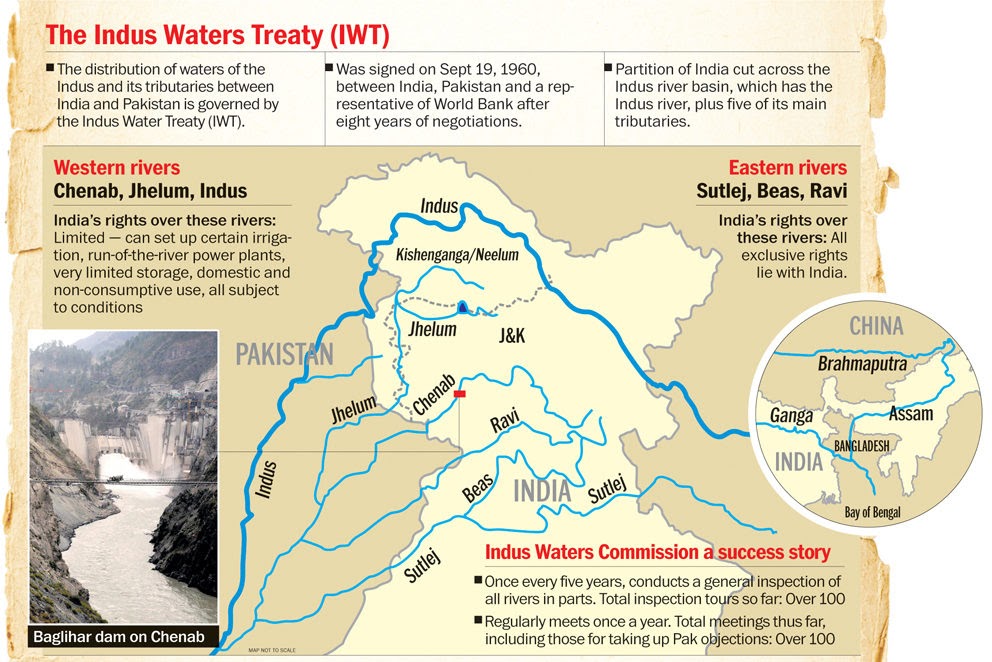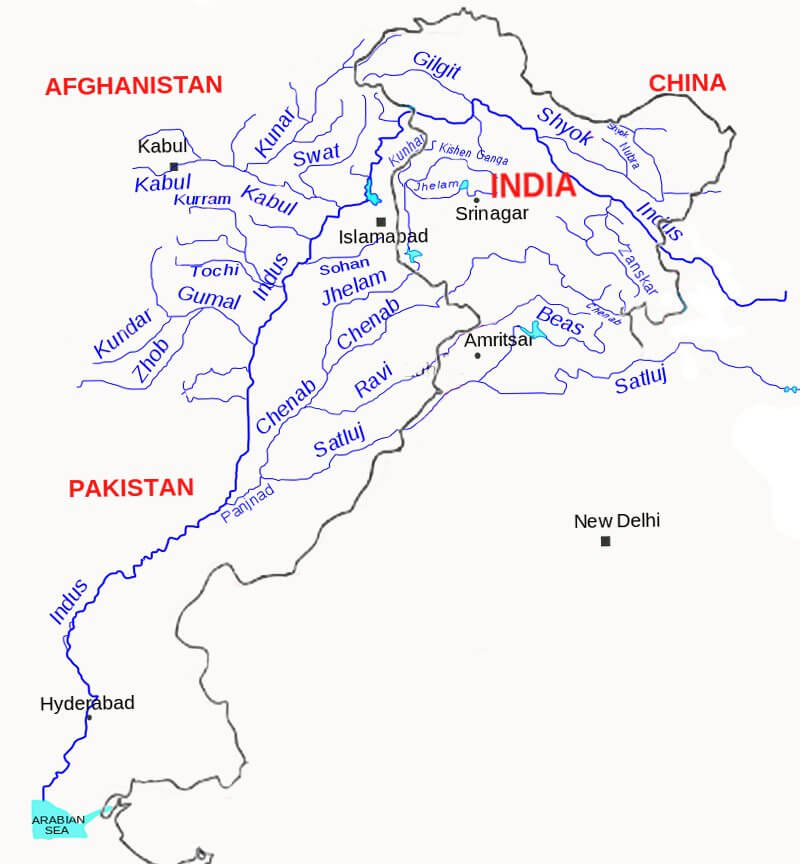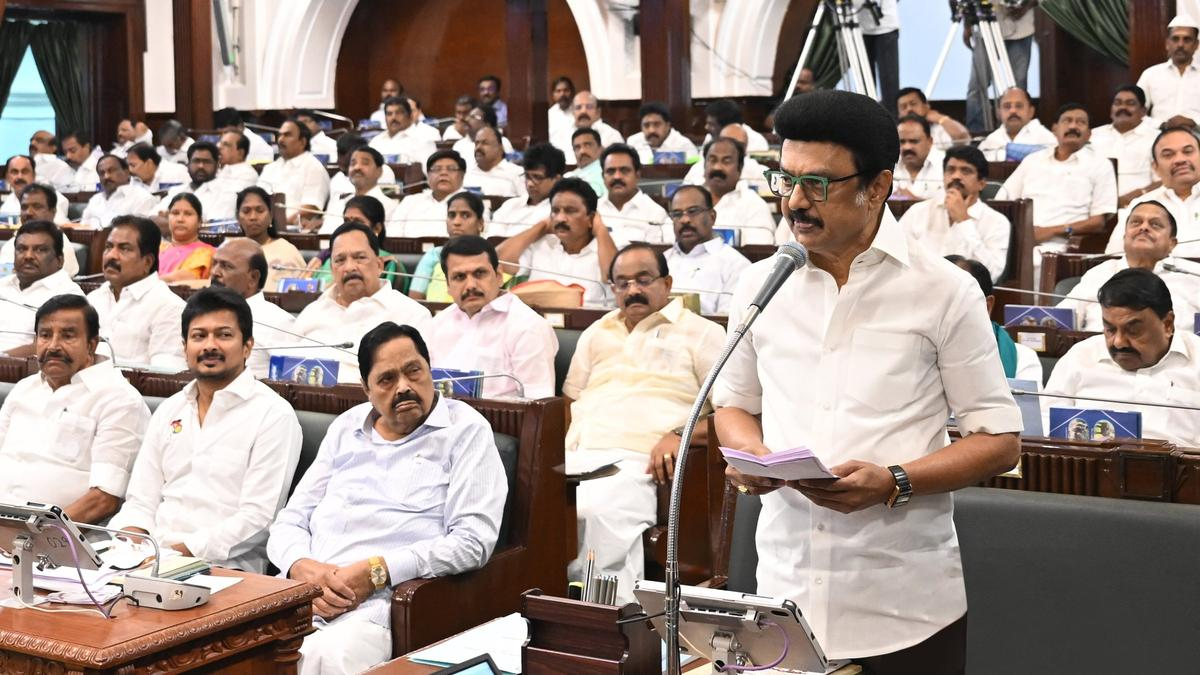Description

Copyright infringement is not intended
Context: India has underscored that its projects are fully compliant with the provisions of the Indus Water Treaty and it is committed to bilateral resolution of issues and suggestions given by Pakistan during 118th meeting of the Permanent Indus Commission concluded in New Delhi.
More on the news:
- India has also said it is already providing information of extraordinary discharges of water from reservoirs and flood flows after Pakistan requested New Delhi to provide advance flood information during the forthcoming flood season, they said.
- India further assured that the same will be continued in the manner provided in the Treaty.
- No discussions were held on Pakistan's objections on design of Indian hydroelectric projects on Western rivers.
- India assured that Indian projects are fully compliant with the provisions of the Treaty and it is committed to bilateral resolution of issues, and suggestions given by Pakistan during 117th meeting will be examined and discussed in the next meeting.
- Both sides also decided that tours of the Commission to both sides of Indus basin shall be held after the end of the flood season at mutually convenient dates.
About the treaty:
- The Indus Water Treaty (IWT) is a water-distribution treaty between India and Pakistan, arranged and negotiated by the World Bank, to use the water available in the Indus River and its tributaries. It was signed in Karachi on 19 September 1960 by Indian Prime Minister Jawaharlal Nehru and Pakistani President Ayub Khan.
- Under the Indus Water Treaty (IWT) signed between India and Pakistan in 1960, all the waters of the eastern rivers -- Sutlej, Beas, and Ravi -- amounting to around 33 million acre feet (MAF) annually is allocated to India for unrestricted use.
- The waters of western rivers – Indus, Jhelum, and Chenab – amounting to around 135 MAF annually have been assigned largely to Pakistan.
- India is permitted to construct the run of the river plants on western rivers with limited storage as per criteria specified in the treaty.
- Under the provisions of Article VIII(5) of the Indus Waters Treaty, the Permanent Indus Commission is required to meet at least once a year, alternately in India and Pakistan.
Indus River Basin:

Copyright infringement is not intended
The Indus is one of the most important drainage systems of the subcontinent of India. It has a length of 2880 Km, of which 709Km lies in India. The State-wise distribution of the drainage area is given below:
Sr.No State Drainage area (sq.km)
- Jammu and Kashmir 193,762
- Himachal Pradesh 51,356
- Punjab 50,304
- Rajasthan 15,814
- Haryana 9,939
- Chandigarh 114
Total 321,289
- The Indus is the western most River system in the subcontinent. Jhelum, Chenab, Ravi, Beas and Satluj are its main tributaries.
- The Indus originates from the Bokhar Chu (glacier) in northern slopes of Mt. Kailash (6714m). It drains the largest number of glaciers and mountain slopes of the Karakorum, Ladakh, Zaskarand Himalayan Ranges.
- Originating from the Kailash Mountain, it flows in a constricted valley north-westward through Tibet, where it is called as Singi Khamban or Lion’s mouth.
- In adakh it follows a long nearly straight course between the Ladakh range and the Zaskar range.
- In the first 480 km, it flows along the northern flank of the Zaskar range over a flat country at heights over 3200 m where it receives River Zaskar below Leh.
- Suruand Dras are the other left bank tributaries which join the Indus near Kargil. Moving north-westward, the Indus is joined by the Shyok-Nubra tributaries.
- These tributaries arise from the Siachin Glacier (Karakoram Range). At Skardu, at a little distance below the Shyok, the Shigar River meets River Indus.
- Gilgit is another important tributary which comes from the west to join Indus. Downward; the Indus crosses the central Himalayan range through a huge synclinal gorge.
- The River passes by the Nanga-Parvat and turns south-west to enter Pakistan.
Jhelum River Basin
- The River Jhelum formed by the water of a spring viz. Cheshma Verinag situated at the foot hills accommodating Banihal pass in the south eastern corner of the Kashmir Valley and flows towards west through the Kashmir Valley.
- In the course up to Anantnag town three major tributaries viz. Sandran River, Bringi River and Arapath joins on its right flank.
- Lidder a biggest River of all the effluents that forms the head waters of River Jhelum.
- Jhelum River receives two small streams viz. Watlara and Arapal on the right flank, and three small streams viz. Rambiara, Sasara, Romuhi on the left flank.
Chenab River Basin:
- The river Chenab (or Chandra Bhaga) is formed after the two streams; the Chandra and the Bhaga merge with each other at Tandi.
- The Chandra and the Bhaga originate from the South-West and North West faces of Barelacha pass respectively in the Himalayan canton of Lahuland Spiti valley in Himachal Pradesh.
- The united stream, known as Chandra Bhaga (Chenab) receives its first major tributary the Miyar Nallah on the right bank
- It is joined on the right bank by its biggest tributary, the Marusudar at Bhandarkot.
- Niru Nallah joins the Chenab River on its left Bank.
- It enters into Sialkot district of Pakistan.
- The total length of the river from confluence of Chandra and Bhaga to Akhnoor is about 410 km.
Ravi River:
- The Ravi River originates in the Himalayas in the Chamba district of Himachal Pradesh.
- The River drains a total catchment area of 14,442 sq.km in India after flowing for a length of 725 km.
- Flowing westward, it is hemmed by the PirPanjal and Dhauladhar ranges, forming a triangular zone.
- It follows a north-westerly course and is a perennial River. It is the smallest of the five Punjab Rivers.
- It flows through Barabhangal, Bara Bansu and Chamba districts.
Satluj River:
- The Satluj River, which is one of the major five rivers of the erstwhile Punjab, is a main source of water for Himachal Pradesh, Punjab, Haryana, Delhi & Rajasthan.
- This river is a tributary of the river Indus & originates near Mansarover Lake in Tibet at an altitude 4572 m.
- Satluj is joined by the river Spiti at flows through 320 kms from border through Shipkilla, Pooh, Powari, Tapri, Karcham, Nathpa, Rampur, Sunni and Dehar to meet Gobindsagar reservoir (Bhakra) near Bilaspur in Himachal Pradesh.
https://epaper.thehindu.com/Home/ShareArticle?OrgId=GTU9SJ8CC.1&imageview=0
1.png)















